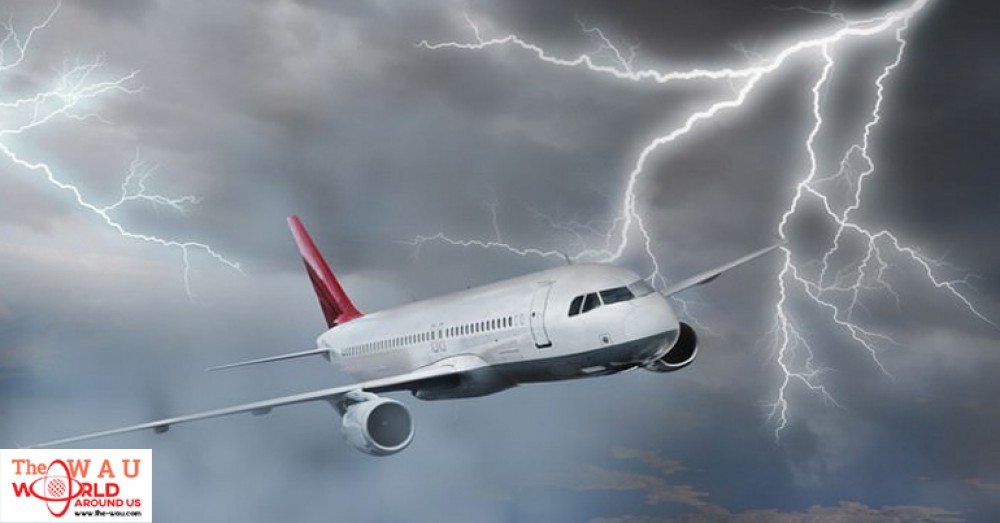Why do planes crash? Here are the 10 risk factors an airplane is in danger. These are some of the most common causes of aircraft disasters.
1. Wind
Wind from above, behind or the side could make an airplane flip over because it takes away the air from around the airplane’s wings. In such a case, the airplane will lose its altitude at a high speed. Also the passengers could get hurt from not locking seat-belts or from flying objects inside the plane. The most dangerous one of these is called a microburst. A microburst is a small, but strong downdraft that moves in a way opposite to a tornado and is found in strong thunderstorms. Flight crews around the world go extensive training to recover from microbursts since they are very fatal to airplanes that are either landing or taking off. Below are some of the fatal airplane crashes recorded in aviation history:
• 1956 Kano Airport, BOAC Argonaut
• 1971 Copenhagen Airport, Malév Ilyushin Il-18 (HA-MOC)
• 1975 John F. Kennedy International Airport, Eastern Air Lines Flight 66, Boeing 727-225(N8845E)
• 1982 New Orleans International Airport, Pan Am Flight 759, Boeing 727-235 (N4737)
• 1985 Dallas/Fort Worth International Airport, Delta Air Lines Flight 191, Lockheed L-1011 TriStar (N726DA)
• 1992 Faro Airport, Martinair Flight 495, McDonnell Douglas DC-10 (PH-MBN)
• 1994 Charlotte/Douglas International Airport, USAir Flight 1016, Douglas DC-9 (N954VJ)
2. Software
Nowadays airplanes rely on automatic landing when the visibility of the pilot is just 75 meters – usually at night and in fog. The technology completely takes care of ‘seeing’ when human eyes are not able to do so. For instance, in 1993 Airbus A320 was cleared for a Warsaw runway 11 approach and were told of the existence of wind shear on the approach. The wheels of the aircraft were sliding on rain-soaked tarmac during landing and were rotating insufficiently because of aquaplaning. The aircraft’s computer was still thinking that the plane was on the air and thus disabled the braking system. The pilots seeing the approaching end of the runaway and an obstacle behind it, decided to steer the aircraft to the right. The aircraft hit the embankment and a fire started in the left wing area and penetrated into the passenger cabin and there were two fatalities.
3. Nature
There is a process known as ‘super-cooling, where fine water drops 10 kilometers above the ground can cool down to far below zero without freezing. These droplets can turn into ice if encountered by a solid object. Even though airplane’s wings are heated to avoid the freezing, the turbines can get frozen since the rotor blades are not heated themselves. If ice sets in on the blade wheels, rotating at 10,000 cycles per second, then individual blades can actually break causing total power failure.
Though aviation industry now tells pilots to circumvent such stormy clouds, the storm systems in the equator and the American Midwest are usually thousands of kilometers long, thus forcing the pilot to go through and deal with it.
Another nature’s risk is volcanic ashes that consist of microscopically small, sharp-edge stones which can smooth down the engines from within, or melt in the combustion chamber at 1,400° thus clogging the valves. Unfortunately, no radar equipment is able to detect this ash.
Yet another risk is posed by birds, both large and small, that could kill the plane’s engines. There are more than 200 aviation fatalities since 1988 caused by this factor.
4. Language barrier and pilot errors
English language is the default working language spoken throughout the aviation industry. However, accents can be misunderstood. Miscommunication may lead to a major crash especially during landing since the control towers may give wrong impression about landing runways. This situation is even harder when visibility is limited by the pilots themselves. Failure to properly monitor the flight instruments can cause crashes. Such errors have catastrophic consequences during landing or take-off.
5. Lack of sleep and exhaustion
Pilots have fatigue because of unpredictable work hours, long duty periods, circadian disruption, and insufficient sleep. Being awake 17 hours straight is equivalent to having 0.5% alcohol level in the blood. Moreover the pilots have to fully concentrate especially during three minute take-off or landing, since 80% of all accidents occur in these situations. The pilot must steer by hand with autopilot turned off. Moreover, one has to totally concentrate at 3 AM, during the body’s physiological low point. Pilots have shifts lasting up to 20 hours – longer than truck drivers.
...[ Continue to next page ]
Share This Post















